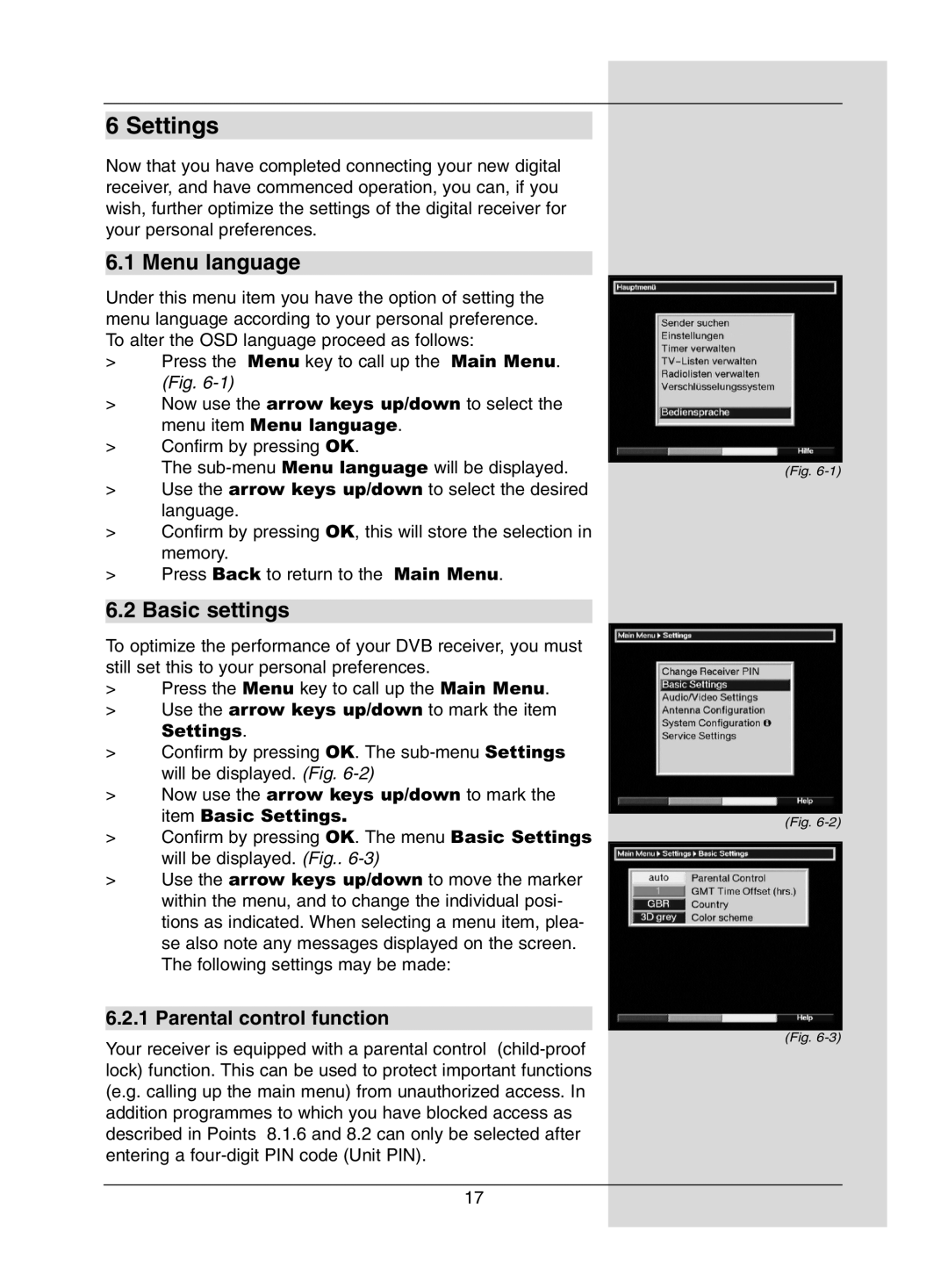
6 Settings
Now that you have completed connecting your new digital receiver, and have commenced operation, you can, if you wish, further optimize the settings of the digital receiver for your personal preferences.
6.1 Menu language
Under this menu item you have the option of setting the menu language according to your personal preference. To alter the OSD language proceed as follows:
>Press the Menu key to call up the Main Menu. (Fig.
>Now use the arrow keys up/down to select the menu item Menu language.
>Confirm by pressing OK.
The
>Use the arrow keys up/down to select the desired language.
>Confirm by pressing OK, this will store the selection in memory.
>Press Back to return to the Main Menu.
6.2 Basic settings
To optimize the performance of your DVB receiver, you must still set this to your personal preferences.
>Press the Menu key to call up the Main Menu.
>Use the arrow keys up/down to mark the item
Settings.
>Confirm by pressing OK. The
>Now use the arrow keys up/down to mark the item Basic Settings.
>Confirm by pressing OK. The menu Basic Settings will be displayed. (Fig..
>Use the arrow keys up/down to move the marker within the menu, and to change the individual posi- tions as indicated. When selecting a menu item, plea- se also note any messages displayed on the screen. The following settings may be made:
6.2.1 Parental control function
Your receiver is equipped with a parental control
(Fig.
(Fig.
(Fig.
17
